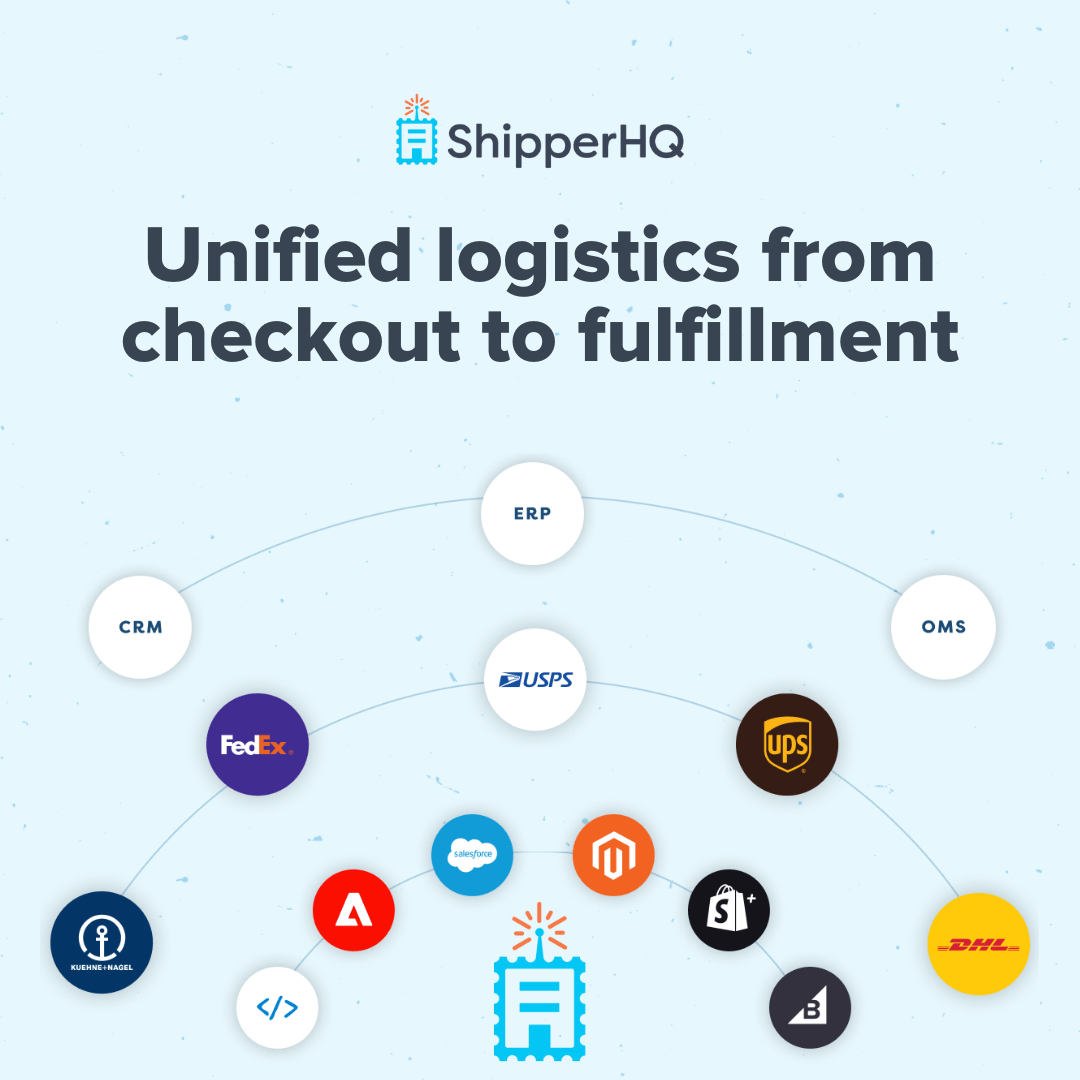U.S. B2B eCommerce sales are expected to generate over USD 3 trillion by 2027.
Growing a B2B eCommerce business requires more than just scaling your product line or increasing your marketing spend; it demands mastery over logistics. Efficient logistics play a pivotal role in ensuring seamless operations and customer satisfaction. B2B shipping comes with its own set of challenges— from handling bulk orders to meeting strict delivery schedules. And in today’s fiercely competitive market, shipping isn’t just a back-end function; it’s a critical part of the overall customer experience.
Leveraging shipping management software is no longer optional for B2B sellers who want to optimize operations, control costs, and deliver on customer expectations. In this guide, we’ll dive into how a powerful suite of B2B shipping features can help you streamline logistics, automate processes, and, ultimately, scale your business efficiently.
Shipping Challenges Faced by B2B eCommerce
1. Complex Shipping Requirements
Managing bulk orders, specialized packaging and large freight shipments requires a sophisticated approach. Relying on manual processes to coordinate these factors increases the risk of errors, delays, and additional costs.
B2B sellers often have to optimize packaging and shipping processes to keep costs manageable while ensuring that goods reach their clients intact.
2. Varied Customer Expectations
B2B clients have higher expectations than B2C consumers. They rely on precise delivery schedules to keep their businesses running smoothly. This means you need to offer reliable delivery windows, customized shipping options, and a high level of accuracy in every order.
Transparent communication around shipping times and delivery tracking is essential to build trust and long-term client relationships.
3. Cost Efficiency
Controlling shipping costs while meeting customer demands is a delicate balance. Offering competitive shipping rates is crucial for attracting and retaining clients, but maintaining profitability requires efficiency.
Many B2B businesses struggle with managing discounts, free shipping thresholds, and tiered pricing structures for bulk orders. Without the right tools, tracking these costs and ensuring accuracy can be daunting.
4. Handling Multi-Location Fulfillment
For businesses with multiple warehouses or fulfillment centers, optimizing shipments from various locations is key to reducing delivery times and minimizing shipping expenses.
Multi-location logistics adds complexity, especially when orders need to be split across different warehouses to meet delivery deadlines. Ensuring that each shipment is routed from the most efficient location is essential for reducing costs and improving customer satisfaction.
How Shipping Management Software Supports B2B Growth
1. Automating Shipping Processes
Automating tasks like rate calculation, label printing, and order fulfillment significantly reduces manual errors, speeds up processing, and frees up your team to focus on growth initiatives.
With shipping software, businesses can set up automation rules for shipping rates, package selections, and label generation, ensuring that orders are processed quickly and accurately.
2. Enhanced Order Processing Speed
Integrating shipping management software with your eCommerce platform or ERP system allows for seamless order processing, leading to faster fulfillment times. This is particularly important for B2B companies dealing with high-volume orders or repeat purchases.
Faster order processing not only improves customer satisfaction but also helps businesses handle increased demand without scaling up labor costs.
3. Improved Visibility and Tracking
Real-time order tracking is critical in the B2B space. Providing customers with the ability to track their shipments builds transparency and strengthens trust.
A shipping software offers tracking capabilities that keep clients informed about their orders, reducing customer service inquiries and improving the overall experience.
4. Optimizing Freight Shipments
For businesses that rely on Less-than-Truckload (LTL) shipping, optimizing freight logistics can be a significant cost-saving measure. Shipping software can streamline freight management, allowing you to access real-time shipping rates and optimize your shipping methods.
By managing LTL shipments more efficiently, businesses can reduce costs while maintaining the speed and reliability expected by their B2B clients.
ShipperHQ Features That Simplify B2B Shipping
Now, let’s explore how ShipperHQ specifically helps B2B merchants overcome these shipping challenges with a range of advanced features.
1. Real-Time Carrier Rates for LTL Shipments
Access live rates for LTL shipments, ensuring accurate pricing for large or bulk orders. With instant LTL freight rates at checkout, you can streamline shipping processes of heavy, oversized goods, all while keeping shipping margins in check.
2. Dimensional Packing
Utilize dimensional packing algorithms to calculate optimal packaging. This helps reduce dimensional weight charges, which can be significant for large or irregularly shaped items.
By using the most efficient packaging options, you can significantly lower the shipping fees.
3. Multi-Origin Shipping
ShipperHQ’s multi-origin shipping feature automatically routes orders to the closest fulfillment center based on customer location. This minimizes delivery times and cuts down on shipping costs.
Perfect for businesses managing inventory across multiple regions, allowing for efficient zone-based logistics.
4. Customer-Based Pricing Rules
ShipperHQ’s shipping rules engine lets you customize shipping rates based on customer profiles, order volumes, or specific contract terms.
You can implement volume discounts, loyalty incentives, or free shipping thresholds for repeat clients, fostering long-term partnerships and encouraging bulk orders.
Elevate Your B2B Operations with Shipping Management Software
Scaling a B2B business is not merely about increasing sales, but also optimizing your logistics to drive fulfillment efficiency and customer loyalty. A shipping management software becomes the backbone of that strategy. By automating processes, improving order visibility, and reducing costs, you can gain a significant edge over competitors.
If optimizing your B2B shipping strategy is a frequent topic in boardroom discussions and you’re aiming to double your business, shipping software can do the heavy lifting and allow you to concentrate on your core business.









